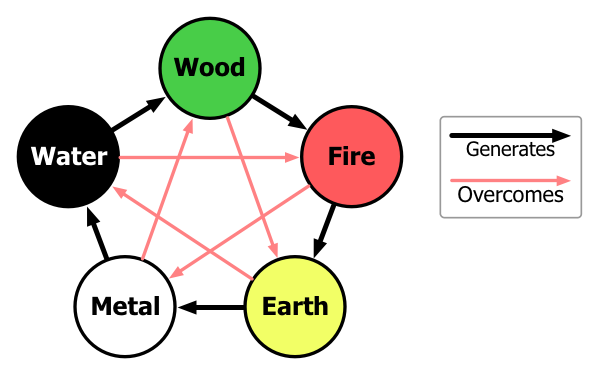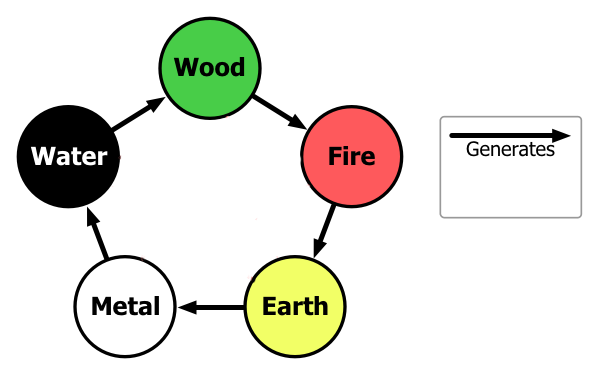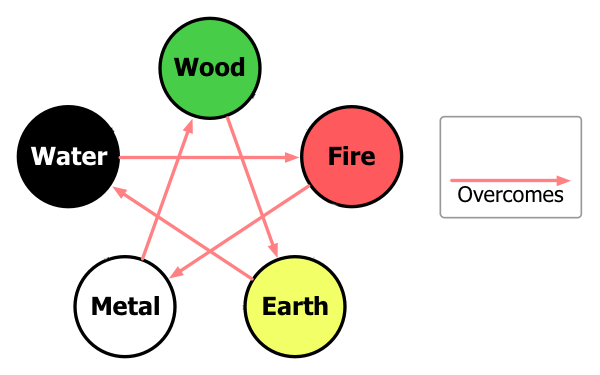
Wuxing, or the Five Elements, are vital to Chinese thought. They are so fundamental that they are not restricted to any particular philosophy or discipline, but are found throughout Chinese culture. Indeed, they can be considered to be essential to the definition of a Chinese character.
The translation of the phrase presents a problem, as Wuxing represents a dynamic process, rather than the static “elements” that we are used to in Western thought. Unlike the Greek elemental system, where the elements were considered the fundamental building blocks of the material universe, the Chinese concept is that of the constantly fluctuating processes that underlie the world. Some people thus prefer the term “Five Phases”.

The five elements are:
- Wood (mu). This can represent the expanding nature of growth, or the flexible nature of a green twig.
- Fire (huo). This can represent the upward movement of flame.
- Earth (tu). This can represent the still, solid nature of the earth.
- Metal (jin). This can represent the contracting nature of cooling metal, or the malleable but strong nature of metal.
- Water (shui). This can represent a downward, flowing nature.
They can be viewed in two cycles: creative and destructive. Each element creates another in an infinite circle: wood creates fire; fire creates earth, as ash; earth creates metal, in the form of the ore that is mined; metal creates water as it condenses on its surface; water creates wood, as rain nourishes plants.

In the destructive, or controlling cycle, wood controls earth, as a tree pushes up through the ground; earth controls water, as a dam can stop a stream; water controls fire; fire controls metal, as heat melts metal; metal controls wood, as an axe can fell a tree.

They are used to categorise all natural phenomena, such as colour, taste, sound, direction, and so on. Indeed, in Chinese thought, everything can be viewed in terms of these processes. Of obvious interest to students of Tai Chi is the concept of the five directions – north (water), south (fire), east (wood), west (metal) and centre (earth).
